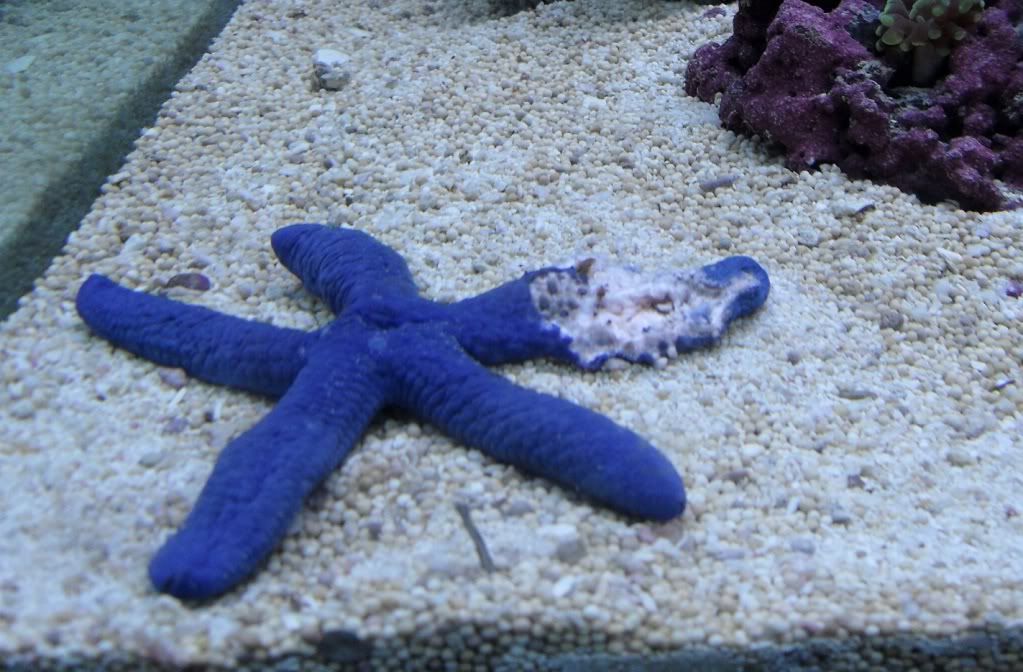I guess I should have been more specific. The air exposure thing isn't a myth, per se, it's more of a misunderstanding. The problem isn't the same as exposing a sponge to air where it can cause an air embolism. It actually arises from a similar situation to what you are experiencing with short acclimation times. When exposed to air suddenly, the starfish is trying to once again use osmosis to regulate it's internal chemistry. If you quickly remove it from water and let it sit just long enough that it starts trying to regulate, you'll likely see a problem. If you take it out for just a second and dunk it back in the tank, you likely won't as it hasn't had a chance to internally respond to the change to air before it's back in the tank.
Likewise, as they crawl out of the tank on their own they're doing it fairly slowly; the same happens when the tides go out, the water doesn't just suddenly leave them high and dry in 2 seconds flat, it's a slower process, made slower by wave action continually bathing them in the same chemistry they've been sitting in.
So, while I understand why people believe it to be a myth, and in some degrees it is, it's really just a set of circumstances that should be avoided. The bottom line is, when exposing a starfish to air or even to water of a different chemistry, doing it quickly and for too long will cause problems.


